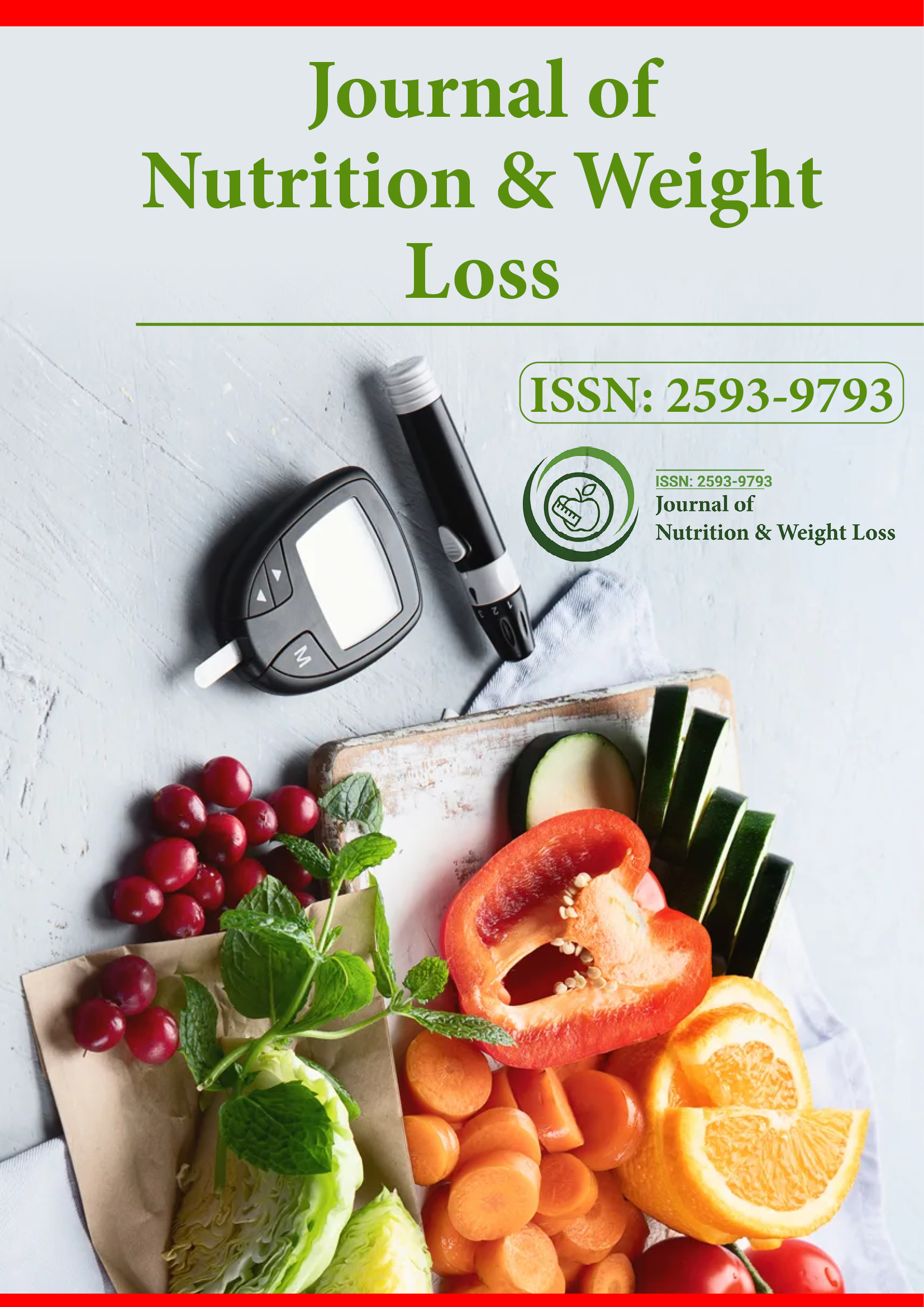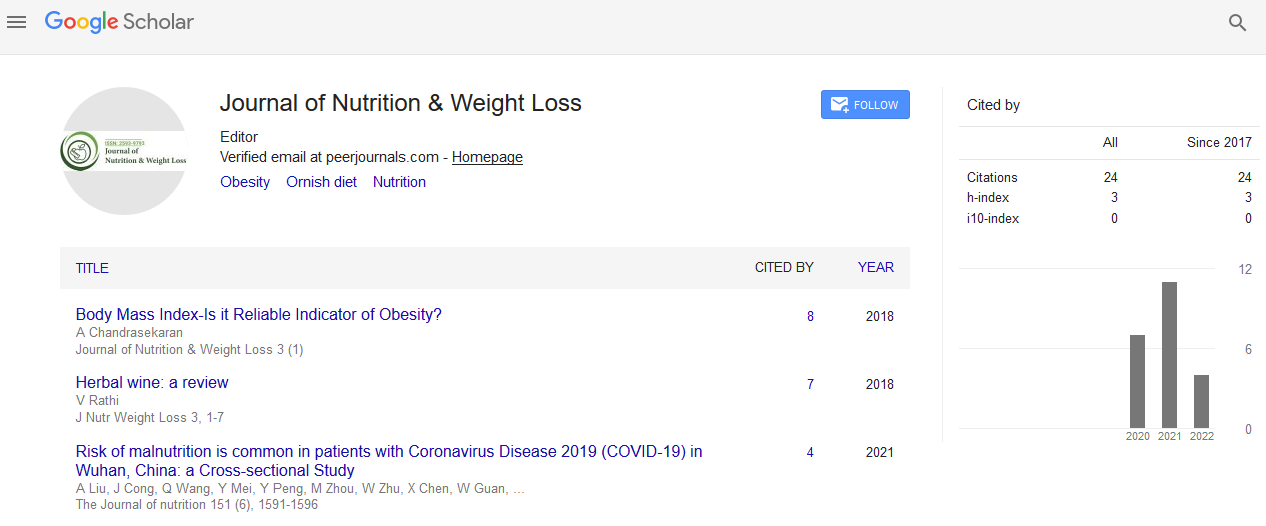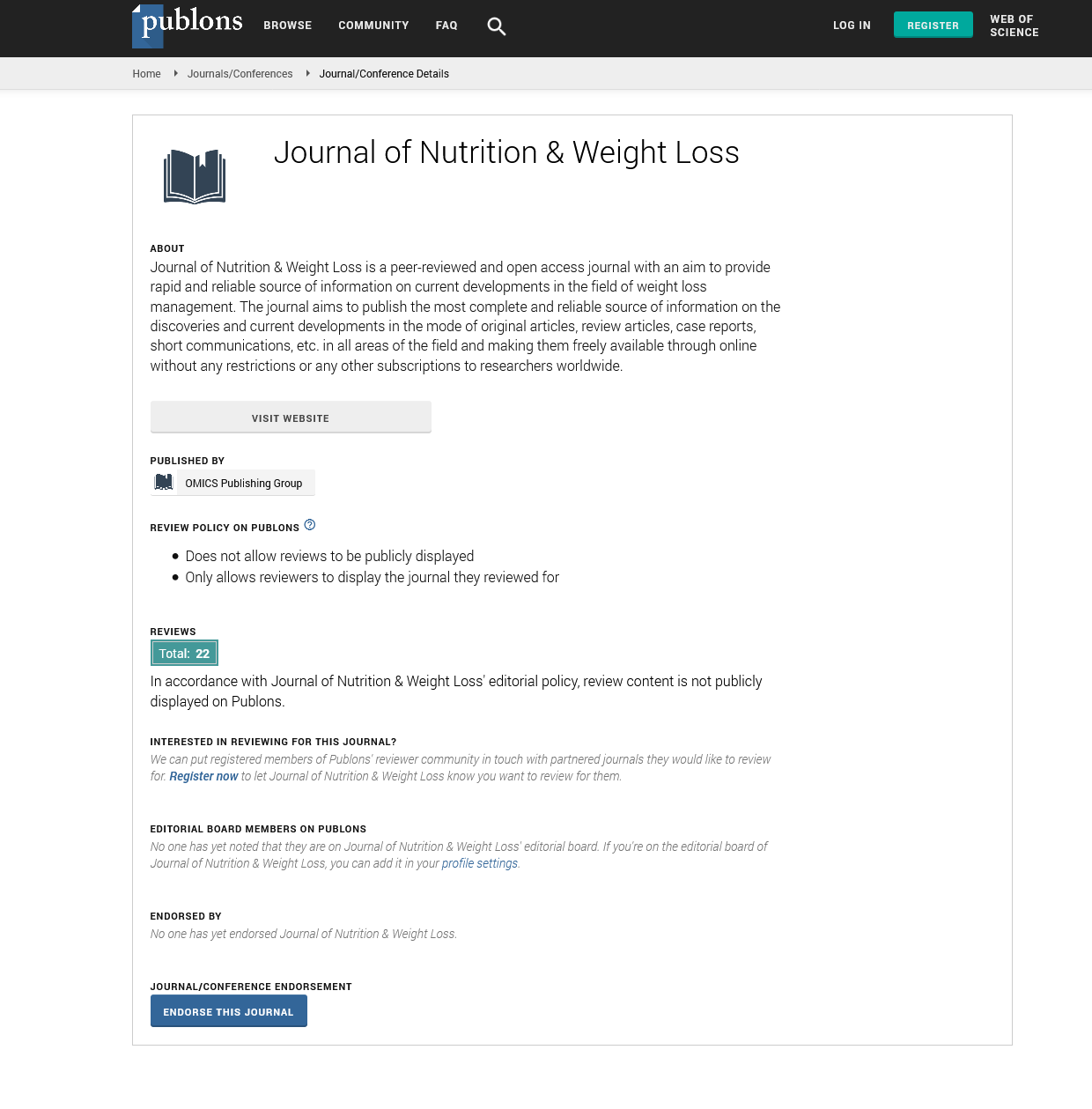Indexed In
- RefSeek
- Hamdard University
- EBSCO A-Z
- Publons
- Euro Pub
- Google Scholar
Useful Links
Share This Page
Journal Flyer

Open Access Journals
- Agri and Aquaculture
- Biochemistry
- Bioinformatics & Systems Biology
- Business & Management
- Chemistry
- Clinical Sciences
- Engineering
- Food & Nutrition
- General Science
- Genetics & Molecular Biology
- Immunology & Microbiology
- Medical Sciences
- Neuroscience & Psychology
- Nursing & Health Care
- Pharmaceutical Sciences
Perspective - (2022) Volume 7, Issue 3
Advanced Methods for Assessing Body Mass Composition
David Beck*Received: 02-May-2022, Manuscript No. JNWL-22-16971; Editor assigned: 05-May-2022, Pre QC No. JNWL-22-16971 (PQ); Reviewed: 19-May-2022, QC No. JNWL-22-16971; Revised: 26-May-2022, Manuscript No. JNWL-22-16971 (R); Published: 02-Jun-2022, DOI: 10.35248/2593-9793.22.7.139
Description
The percentage of your total body weight that is made up of fat, muscle, and bone is determined by your body composition. Knowing your body composition might provide you additional insight into your health. Because of their body composition, two persons who weigh the same might have quite different health and fitness demands. Body composition is significant since it assesses your overall health and fitness by calculating your body fat percentage. Your bathroom scale has no way of knowing how much of your weight is made up of fat and how much is made up of muscle. Body composition measurements, on the other hand, are possible. A higher degree of health is associated with less fat and greater muscle.
In and outpatient under nutrition is under-diagnosed, and this is projected to increase in the next decades. A rise in the incidence of sarcopenic obesity will come from an increase in the prevalence of obesity combined with chronic diseases linked with Fat-Free Mass (FFM) loss. Weight loss and the body mass index are ineffective in detecting FFM loss in people with sarcopenic obesity. Loss of FFM is linked to higher mortality, worse clinical outcomes, and a lower quality of life. Body composition measurement by dual-energy X-ray absorptiometry, bioelectrical impedance analysis, or computed tomography assesses the loss of FFM in sarcopenic obesity and chronic illnesses. It enables individualized nutritional support and disease-specific therapy while also lowering the risk of medication toxicity. For the initial assessment and sequential follow-up of nutritional status, body composition evaluation should be included into standard clinical practice. It might enable for objective, systematic, and early detection of malnutrition, as well as the rational and timely provision of appropriate nutritional assistance, lowering malnutrition-related illness, death, poor quality of life, and global health-care expenditures.
From basic indirect measures like the waist-to-hip ratio and callipers to sophisticated direct volumetric measurements based on three-dimensional imaging methods, a variety of body composition evaluation approaches have been developed. Invasive or in vitro procedures for body composition analysis include the inhalation or injection of water-or fat-accumulating substances, as well as corpse dissection and chemical analysis. However, the focus of this discussion will be entirely on noninvasive in vivo assessment methods.
Hydrostatic weighing
The concept of Archimedes underpins hydrostatic weighing (underwater weighing) and densitometry. The density of the body is calculated by subtracting the weight of the body in air and water. The total body fat % may be determined using a twocomponent model with distinct densities for fat mass and fat-free mass, as well as adjusting for the air capacity in the lungs. Obviously, this method is incapable of determining the distribution of AT or Lean Tissue (LT).
Air-displacement plethysmography
This approach will work on the same idea as underwater weighing; however it is done in the air rather than in the water. Individuals wear swimming suits and sit in a tiny room; one commercial example is the "Bod Pod." The gadget calculates body volume based on the difference in air pressure between the empty and occupied chambers.
Bioelectric Impedance (BIA)
The BIA apparatus measures the resistance by sending a tiny, undetectable, harmless electric current through the body. When traveling through body fat, the current encounters higher resistance than when travelling through lean body mass and water. Body fat percentage and fat-free mass are calculated using equations.
Dual Energy X-ray Absorptiometry (DEXA)
X-ray rays travel at varying speeds via different bodily tissues. DEXA calculates fat-free mass, fat mass, and bone mineral density using two low-level X-ray beams. DEXA is generally primarily utilized in research settings for this reason.
Body composition can tell you how much fat you have on your body. Your body form, on the other hand, is unique to you, and there are uncontrolled elements that influence your body composition, such as age, genes, and hormones etc. To achieve your goals of changing your body composition, you must strike the correct mix of physical activity and diet. When you want to gain muscle and decrease fat, slow and gradual adjustments are optimal. It's crucial to keep in mind that certain variables are beyond your control. Consult your primary care practitioner or a trained nutritionist for advice before making any changes to your diet or fitness program.
Citation: Beck D (2022) Advanced Methods for Assessing Body Mass Composition. J Nutr Weight Loss. 7:139.
Copyright: © 2022 Beck D. This is an open access article distributed under the terms of the Creative Commons Attribution License, which permits unrestricted use, distribution, and reproduction in any medium, provided the original author and source are credited.


